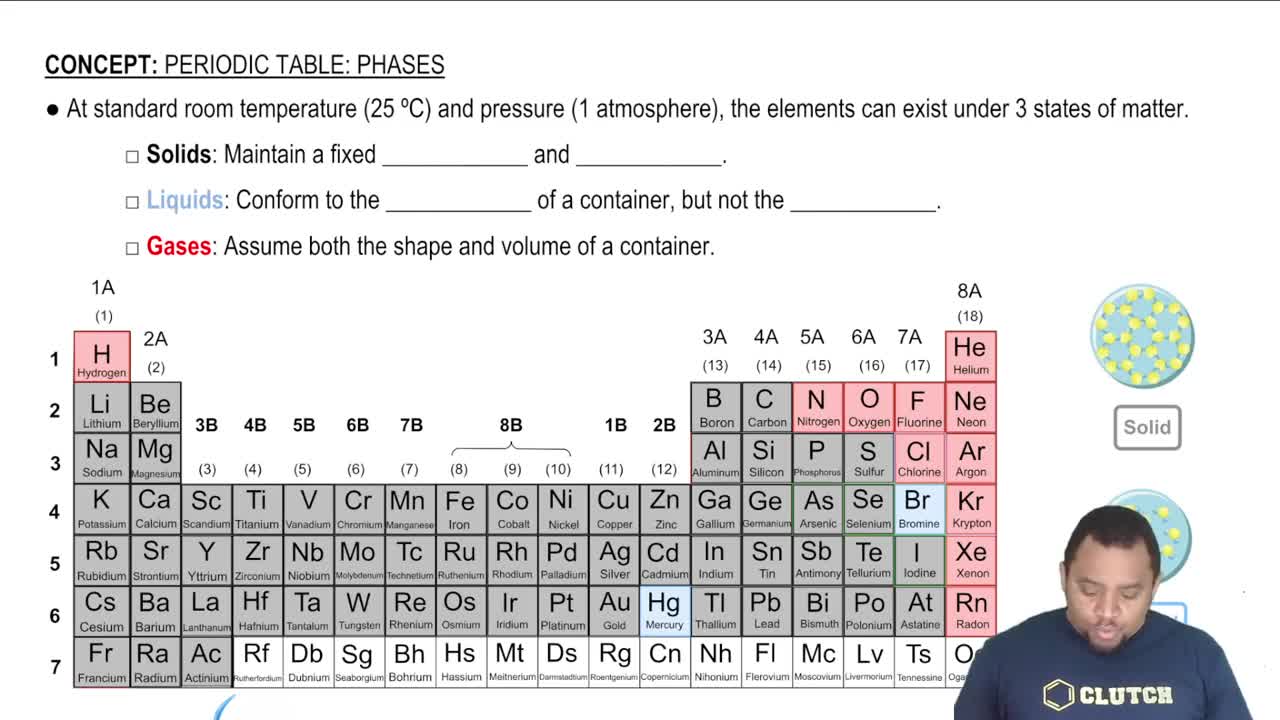Consider the H2+ ion. (b) How many electrons are there in the H2+ ion?
Ch.9 - Molecular Geometry and Bonding Theories
Chapter 9, Problem 71f
Consider the H2+ ion. f. Which of the following statements about part (e) is correct: i. The light excites an electron from a bonding orbital to an antibonding orbital, ii. The bond order of the ion does not change when an electron is excited, or iii. In the excited state there are more bonding electrons than antibonding electrons?
 Verified step by step guidance
Verified step by step guidance1
Understand the concept of molecular orbitals: In the H2+ ion, there is one electron that can occupy either a bonding or an antibonding molecular orbital.
Recall that when light excites an electron, it can move from a lower energy orbital (bonding) to a higher energy orbital (antibonding).
Evaluate statement i: If light excites an electron from a bonding orbital to an antibonding orbital, this statement is correct.
Evaluate statement ii: Bond order is calculated as (number of bonding electrons - number of antibonding electrons)/2. If an electron is excited from a bonding to an antibonding orbital, the bond order changes.
Evaluate statement iii: In the excited state, if an electron moves to an antibonding orbital, there will be equal numbers of bonding and antibonding electrons, not more bonding electrons.

Verified video answer for a similar problem:
This video solution was recommended by our tutors as helpful for the problem above.
Video duration:
4mWas this helpful?
Key Concepts
Here are the essential concepts you must grasp in order to answer the question correctly.
Bonding and Antibonding Orbitals
In molecular orbital theory, electrons occupy molecular orbitals that can be classified as bonding or antibonding. Bonding orbitals are lower in energy and stabilize the molecule, while antibonding orbitals are higher in energy and can destabilize it. The transition of an electron from a bonding to an antibonding orbital can affect the stability and properties of the molecule.
Recommended video:
Guided course

Molecular Orbital Theory
Bond Order
Bond order is a measure of the number of chemical bonds between a pair of atoms, calculated as the difference between the number of bonding and antibonding electrons divided by two. For example, a bond order of 1 indicates a single bond, while a bond order of 0 indicates no bond. Changes in electron configuration, such as exciting an electron to an antibonding orbital, can alter the bond order.
Recommended video:
Guided course

Average Bond Order
Excited State
An excited state occurs when an electron absorbs energy and moves to a higher energy level, such as from a bonding to an antibonding orbital. In this state, the distribution of electrons can change, potentially affecting the bond order and stability of the molecule. Understanding the implications of an excited state is crucial for analyzing molecular behavior and reactivity.
Recommended video:
Guided course

Element States of Matter
Related Practice
Textbook Question
Textbook Question
Consider the H2+ ion. (c) Write the electron configuration of the ion in terms of its MOs. (d) What is the bond order in H2+?
Textbook Question
Consider the H2+ ion. (e) Suppose that the ion is excited by light so that an electron moves from a lower-energy to a higher-energy MO. Would you expect the excited-state H2+ ion to be stable or to fall apart?
Textbook Question
(c) Calculate the bond order in H2-.
Textbook Question
Draw a picture that shows all three 2p orbitals on one atom and all three 2p orbitals on another atom. (b) How many p bonds can the two sets of 2p orbitals make with each other?
Textbook Question
Draw a picture that shows all three 2p orbitals on one atom and all three 2p orbitals on another atom. (c) How many antibonding orbitals, and of what type can be made from the two sets of 2p orbitals?
